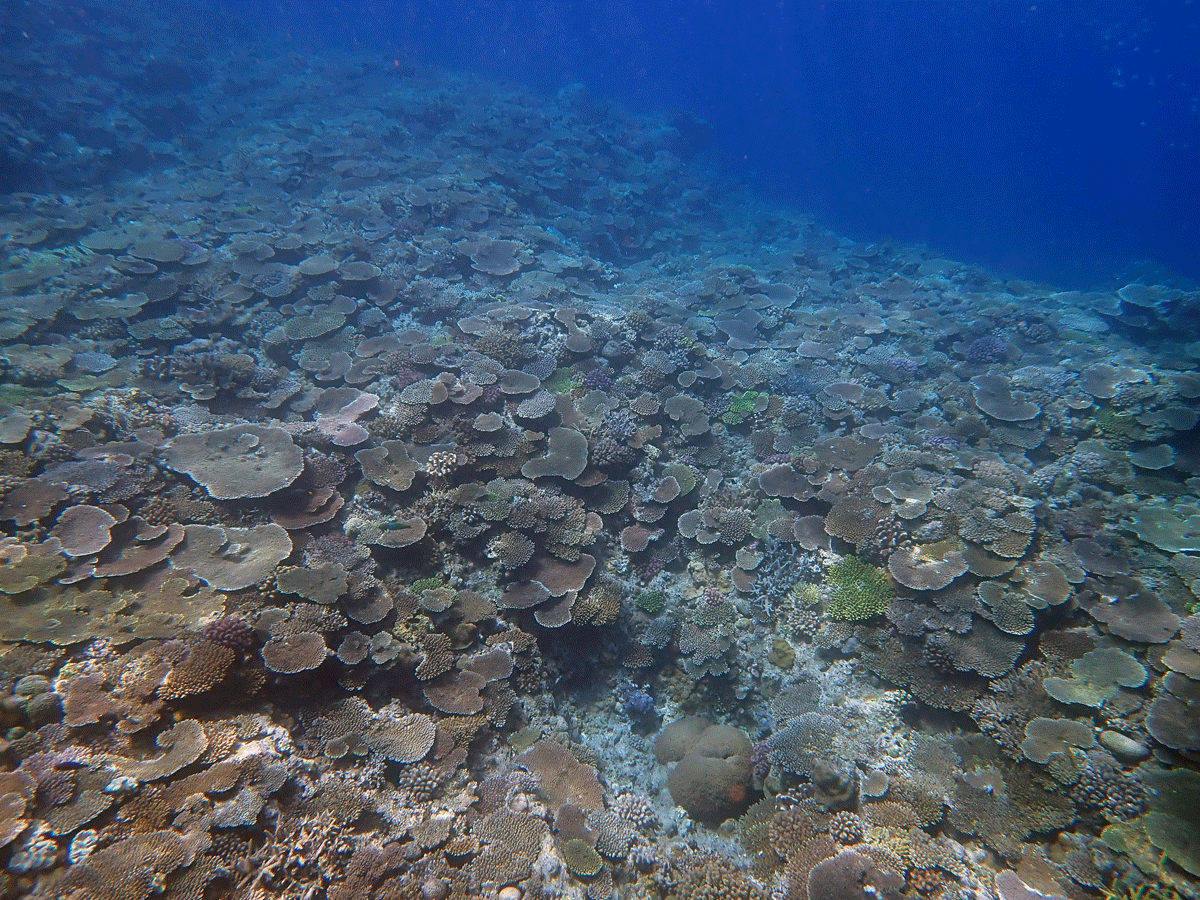Scientists from the Okinawa Institute of Science and Technology Graduate University (OIST), the University of Tokyo, and the Okinawa Prefecture Environment Science Center have engineered a tool that can establish the diversity of hard corals on a reef by examining the DNA in a sample of seawater.
 One of the three sites where researchers collected water samples for eDNA analysis. Staff scientist Dr. Koki Nishitsuji stated that although nearly everyone acknowledges that coral is beautiful, their diversity and importance are not as well known to the public. (Image Credit: Okinawa Institute of Science and Technology).
One of the three sites where researchers collected water samples for eDNA analysis. Staff scientist Dr. Koki Nishitsuji stated that although nearly everyone acknowledges that coral is beautiful, their diversity and importance are not as well known to the public. (Image Credit: Okinawa Institute of Science and Technology).
The powerful new tool has been described in an article published in Frontiers in Marine Science. The tool facilitates more precise and accessible coral reef monitoring — a positive step for coral reef conservation and restoration worldwide.
Coral reefs are very important. Not only are they incredibly diverse and house around one-quarter of all marine life, they also protect coastlines from storms and erosion, and provide food and income to millions of people worldwide.
Dr. Koki Nishitsuji, Staff Scientist, Marine Genomics Unit, OIST
Dr. Nishitsuji continued, “But, due to global warming, corals are dying and the reefs, disappearing. We want to recover the corals around Okinawa and beyond. To do this, we have to understand the diversity of coral. This new tool is a very accurate and easy way to determine such diversity.”
Conventionally, scientists would dive at a site and view the various types of coral they observed and return frequently to record variations. Not only was this laborious but it also needed specific knowledge — different coral groups can look quite similar and thus mask their fundamental phylogenetical diversity.
On the other hand, two separate corals in the same species can look quite different, with diverse sizes and colors, causing more confusion.
In the current research, the team eliminated the need to view the coral directly by building a robust identification tool in the form of a primer — a short DNA sequence. This primer included a sequence that is nearly identical in 36 different genera of hard, or scleractinian, coral, enabling any coral belonging to these genera to be identified with merely their DNA.
To verify this primer, samples were gathered from three individual reef areas in Okinawa, Japan. Although seawater samples might, at first look, seem null of valuable material, they essentially contain a soup of genetic data that can expose what is present in the immediate ocean via the analyses of environmental DNA (eDNA) — the DNA of an organism located in its local environment. For coral, this involves the DNA confined in the mucus that it ejects into the seawater.
The scientists used their primer to gather all the scleractinian coral eDNA from the samples. They then prepared millions of copies of all the extracted DNAs, which meant that even the minutest DNA piece was enlarged, enabling it to be sequenced and examined.
The analysis exposed that various genera of coral could be detected. Furthermore, the team was able to identify each reef with merely the eDNA. Two of these areas were just 730 m apart indicating that eDNA content, and the coral communities, can differ within 1 km.
When they compared their outcomes with those gathered from the conventional process of visual identification, the scientists discovered a very minimal difference between the two, signifying that each was as accurate as the other but the eDNA technique was faster and needed less specific knowledge.
This eDNA method has been used by a few previous studies on coral, but those are less specific to corals or restricted to certain species of coral. The important part of this study is the primer we developed, which could identify 26 different genera with the samples we used and has the potential to identify more.
Dr. Koki Nishitsuji, Staff Scientist, Marine Genomics Unit, OIST
“We will continue to refine our tool to zoom in to species level identification, so we can find out exactly what is present on each reef and what needs to be done to conserve this diversity,” Dr. Nishitsuji added.
Journal Reference:
Shinzato, C., et al. (2021) Novel mitochondrial DNA markers for scleractinian corals and generic-level environmental DNA metabarcoding. Frontiers in Marine Science. doi.org/10.3389/fmars.2021.758207.